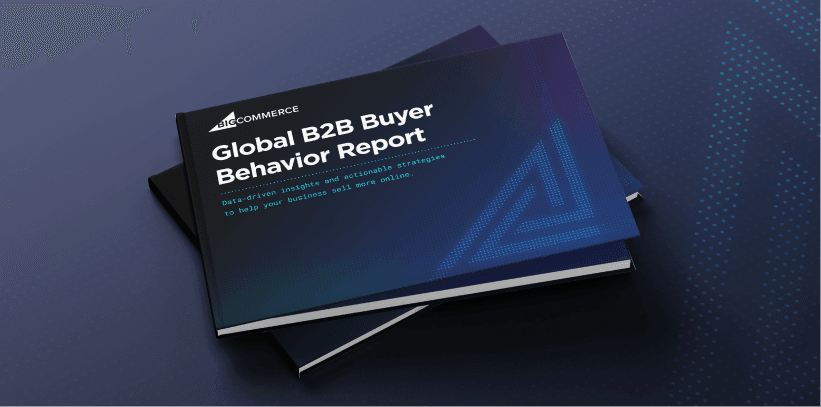Explore the
BigCommerce platform
Get a demo of our platform to see if we’re the right fit for your business.
Not ready for a demo? Start a free trial
From Launch to Loyalty: How Ecommerce Helps Brands to Succeed in the Subscription Business

Written by
Ramanathan Ramakrishnamurthy
Imagine receiving a box of carefully chosen everyday essentials, tailored to your preferences, delivered each month.
This is the magic behind companies like Bespoke Post, a pioneer in the subscription ecommerce space. Bespoke Post has transformed how consumers discover and experience new products by delivering curated lifestyle items, like beard oil for men or soy candles for women, directly to their doorsteps.
This innovative approach not only enhances customer convenience but also creates a recurring revenue stream for the business, demonstrating the power and potential of the subscription ecommerce model.
According to IMARC Group, the global subscription ecommerce market in the year 2023 reached 193.6 billion USD. The growth has happened across several industries that offer subscription services. As per eMarketer research, customer retention rates and lifetime value among ecommerce subscription categories worldwide have experienced growth in 2022.
Subscription brands in home goods stand the highest with 51% retention rate, while personal care and beauty have 36% followed by categories like pet and animals, fashion and apparel, food and beverages, health and wellness.
IMARC’s report predicts this industry to reach 5,014.4 billion USD by the year 2032. This long upward trajectory means that there will be enough opportunities to leverage.
If you're looking to secure a share of this billion-dollar market, it's crucial to prepare ahead. This blog is your guide to understanding the different types of subscription ecommerce businesses, advantages of subscription ecommerce models, and essentials for subscription ecommerce.
Types of subscription ecommerce
Replenishment subscriptions
Brands that sell essential, daily-use commodities like groceries, sanitary products, cosmetics, and personal care products adopt the replenishment subscription model. This solves the problem of customers frequently reordering when it is just about time, building a steady recurring customer base.
Dollar Shave Club is a US-based male grooming company that offers razors and personal care products on a monthly basis.
Curation subscriptions
A curation subscription offers handpicked products based on your taste or need. Curation subscription products include food, cosmetics, fashion, and health supplements.
A collection of products would be curated for a person's need or interest, like a box that carries beauty care products for a particular skin type or food supplements for muscle building. A good example of a curation subscription would be Glossybox, a beauty and lifestyle subscription box service.
The goal is to provide a personalized, guided selling experience. By doing so, brands can maximize the chances of selling multiple products, increasing average order value.
Access subscriptions
The access subscription ecommerce model encourages users to pay to access products or services. Customers get privileges like exclusive offers, discounts and early access to new arrivals. Apart from physical products or services, the access subscription model also suits downloadable products. For example, OTT platforms, e-learning platforms, magazines, fashion and beauty brands offering memberships leverage access subscription model.
Apple One, Amazon, and Netflix offer access to movies and television series content. Scribd is a digital content subscription service that provides thousands of books, audiobooks and educational materials based on a freemium model.

Benefits of subscription ecommerce model
Inventory forecasting
Traditional retail ecommerce brands go for last-minute stock replenishments based on the surge in demand. Though demand forecasts will help in advance procurements, brands cannot guarantee the quantities. Subscription ecommerce, however, provides an almost accurate prediction of what's needed.
Subscription brands operate with a clear idea of the weekly and monthly demands. So, their purchases are pre-planned and close to what's required. Moreover, managing stocks also becomes comparatively easy. Subscription brands can also predict slow selling seasons, optimize procurements accordingly, and save on costs.
Customer experience translates to multiple benefits
Retail customers look for a simplified and faster shopping experience when buying online. The subscription ecommerce model addresses this consumer expectation. Subscriptions remove the hassle of repeating orders for users. Once they subscribe, products or services reach them without them having to consciously get them.
Subscriptions also allow brands to provide a personalized experience and improve upsell and cross-sell opportunities. 81% of customers prefer companies that offer a personalized experience, according to the 2024 State of Customer Service and CX Study. Subscription brands provide free shipping and simple recurring payment options.
Loyal brand community
Repeated purchases and continued customer satisfaction result in building a loyal brand community. From word-of-mouth recommendations to user reviews on the web and social media, user-generated content exerts a positive influence on potential customers.
40% of customers make a purchase because of social media influence — Intuit. A loyal customer community reduces marketing efforts and budgets for acquiring new customers. 88% of consumers trust user reviews as much as personal recommendations.
The lifetime value of such a customer could also become longer as they decide to subscribe, influenced by a pool of customers who have experienced great value from the brand. Customers acquired via referrals have a 37% higher retention rate and a 16% higher customer lifetime value.
Essentials for subscription ecommerce
Technical and business considerations
When starting a subscription ecommerce business, ensure your chosen platform has a few technical advantages. You should look for faster implementation, scalability, API integration, third-party system integration (ERP, payment, fulfillment), headless support, and cloud hosting. Also, look into aspects like development complexity, dedicated technical support, and easy configurations. These factors can enable your business to minimize the total cost of ownership, grow continuously, innovate rapidly, and battle issues faster.
Once you have chosen a platform, the next step is to find an agency. For example, if you choose BigCommerce, look for BigCommerce web development services that provide end-to-end services like implementation, migration, and integration.
Minimizing voluntary churn
Online buyers sign up for a subscription product or service expecting a hassle-free buying experience and continued customer satisfaction. Like traditional retail ecommerce, impressing customers during a one-time transaction won't suffice. Subscription brands should consistently strive to strive to provide a great experience to minimize churn.
Evivo is a probiotics brand that focuses on parents who want to consciously improve their child's health right from the early stages. The brand provides a monthly supply of probiotics that help babies to have healthy gut bacteria. The brand helps its customers keep track of when they need to refill.
Regular customer satisfaction surveys help brands identify and respond quickly to dissatisfaction. Brands can encourage participation in the study through rewards and loyalty points.
Minimizing involuntary churn
Timely email notifications can help subscription brands combat a list of challenges. The foremost of them is the involuntary churn rate. Involuntary churn happens when recurring payments don't go through. It could be due to insufficient funds, credit card expiry, or an exceeded limit.
Automating reminder notifications that inform them to update their payment information or take necessary action for a smooth transaction can help reduce involuntary churn. Brands can also remind customers of annual subscriptions and lure them to sign up with discounts.
Grammarly, a writing assistant, nudges customers in monthly and quarterly plans to switch to annual plans to save 40% through emails, in-app notifications, and the user account dashboard.
Brands can extend their efforts after failed transactions as well. Dunning emails help brands win back customers quickly in such scenarios. Basically, it would be an email reminding customer about a failed payment of their subscription plan. Mural, a visual collaboration platform for teams, sends emails with well-crafted messages that highlight issues for payment failure and politely request that they fix it.
While choosing your ecommerce platform, go for the one that offers email notifications out-of-the-box. Verify if it offers editable email templates for marketing and transactional purposes. Also, look for features to automate email triggers, add custom code, call to action, and customize email templates.
Self-service subscriptions
Self-service subscriptions allow users to manage subscriptions independently without assistance from a customer support team.
Self-service subscriptions allow users to renew, add, or remove products, view payment history and renewals, upgrade, switch, and cancel subscriptions. Additionally, they allow subscribers to change their preferences, such as opting out of promotional emails.
Providing such provisions has a myriad of customer experience and business benefits. Self-service subscriptions give users complete control, improving the overall customer experience.
Self-service subscriptions open up upselling opportunities by enabling users to upgrade subscription plans directly through their dashboard. Similarly, a downgrading option can help retain customers who might otherwise consider discontinuing their service. Most importantly, self-service subscriptions are designed to minimize billing errors and payment delays, which can significantly impact your business's bottom line.
Inspired Go is a meal subscription brand that caters to people who want to eat healthy but need more time to prepare it themselves. Since its business model is based on day-to-day meals, the brand provides convenience for modifying orders and regular reminders to customize orders. To encourage subscriptions, the brand offers a 5% discount on every order.
Loyalty programs
For subscription buyers, it's a one-time setup process, and they'll never have to worry about it until they decide to unsubscribe. The recurring income will be steady, but the average order value will remain the same for a long time, especially for replenishment subscription model.
Loyalty programs that encourage customers to spend more on each subscription would improve the average order value. Ideally, these rewards should be stackable so that customers can use them in their future purchases whenever necessary. This approach will increase the likelihood of a customer converting during an upsell or cross-sell initiative.
Guided selling
Guided selling enables personal assistance for customers in making purchase decisions. This mechanism asks a series of questions. Based on the responses, users have suggested the right products. By doing so, brands can provide a personalized experience and eventually earn users' trust.
Dollar Shave Club, one of the top brands in the subscription ecommerce model, offers guided selling. The brand encourages users to take a quiz that asks questions like 'What do you shave?' and 'How often do you shave?' and then sends a suitable product recommendation to their email address.
While launching your subscription ecommerce business, look for platforms that offer guided selling options.
The final word
Subscription ecommerce has evolved as a business model that benefits both businesses and consumers. It empowers brands to combat some of the most common challenges that traditional ecommerce brands face like steady revenue, personalization, and customer longevity.
While building your subscription ecommerce business, start by understanding the different types of subscription models based on the products or services you offer. Emphasize delivering a great customer experience, which will continuously enable you to retain customer relationships.
While picking your platform, look out for features that can deliver a great customer experience. This, in turn, will continuously enable you to establish long-term customer relationships. Your platform of choice should be sophisticated enough to accommodate the unique features of subscription ecommerce and simple enough for your operations team and customers to use.
Platforms like BigCommerce can be a starting point for your platform research. Finally, look out for an official BigCommerce partner agency with an official partnership with your chosen platform.


